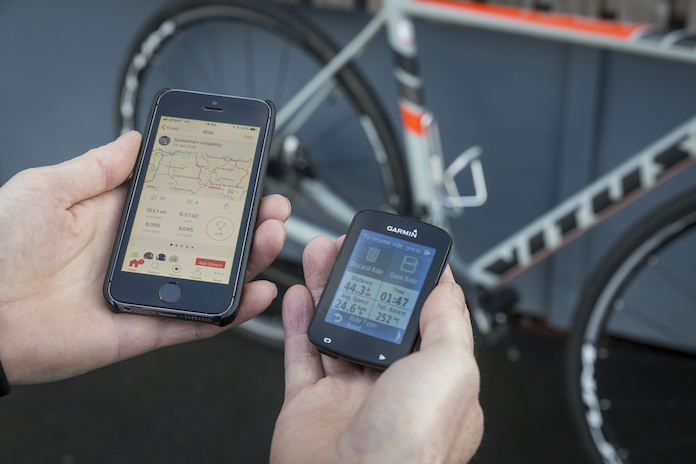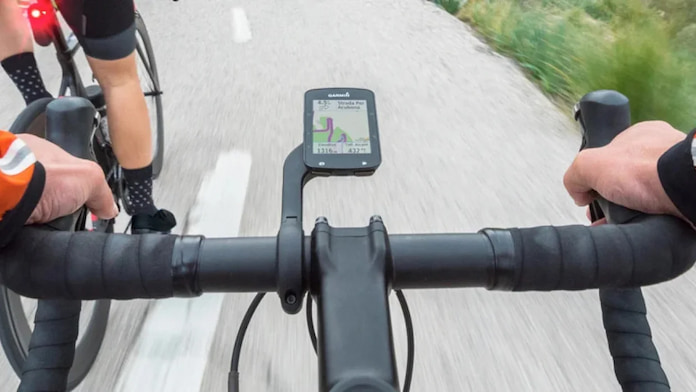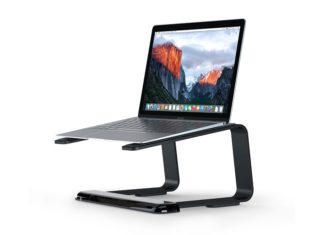
In a mostly digitised world, we’re all constantly relying on technology to help us out in our everyday lives. You don’t have to look very far to see somebody with their head buried in their smartphone, or browsing the internet on their laptop looking for the latest shopping offers. So, it’s no surprise that this technology has made its way into the world of cycling too, in the form of cycling computers.
Cycling computers are becoming increasingly popular amongst cyclists of all levels, from amateur to professional. They offer a wealth of information and data that can help you improve your performance on both regular and electric bikes, as well as navigate your way around if you’re exploring new routes. But how do they work? And what should you look for if you’re thinking of investing in one?
How Does a Bike Computer Work?
In short, reliable and sturdy cycle computers operate by collecting various sensors on your bike and then displaying this information on a small screen. They’re attached to your bike in a number of ways, depending on the model, but are usually either clamped onto your handlebars or stem using a mount, or are attached to your bike frame with zip ties.

They can be either wired or wireless, with the former being the most reliable but the latter being much more convenient. Wired bike computers pick up signals from sensors that are hardwired into your bike, whereas the wireless use radio frequency (RF) to communicate with both sensors and display units.
You likely won’t need to worry too much about this unless you’re a competitive cyclist, in which case wired is usually the way to go. If you’re just starting out or are a leisurely rider, wireless will probably suffice. Plus, it’s much easier to set up and use since you don’t have to worry about fiddling with cables.
What Are the Main Features of Bike Computers?
Most cycling computers will come equipped with a range of features that can be really helpful, both on and off the bike. Some might be essential for you, while others might not be so important. It really depends on what kind of rider you are and what you want to get out of your cycling experience.
GPS Navigation
This is one of the most popular features on these kinds of devices, given that we now live in a world where GPS is ubiquitous. It allows you to map out new routes, track your progress and location, and even find your way back home if you get lost. This can be really handy if you’re exploring new territory and don’t want to come across unpleasant surprises.

Most of the information shown on your GPS will be displayed on a map, which you can view in either 2D or 3D. Each device may have a slightly different way of displaying this information, but you’ll usually be able to see your current location and distance covered at a glance.
Cycling Information
This is the bread and butter of the convenient cycle computers which were designed for this in the first place. This data is collected by sensors that are either hardwired or wirelessly connected to your bike, and usually includes things like your current speed, average speed, cadence, and power output.
This data can be really useful in terms of helping you improve your performance. For example, if you’re training for a race or event, being able to track your progress over time can help you see where you need to make improvements.
Bodily Functions
More advanced devices will also include features that track things like your heart rate and calorie burn. This information can be really useful if you’re trying to lose weight or get in shape, as it can help you see how effective your cycling sessions are in terms of burning calories.

The more information you have, the better equipped you’ll be to make changes to your diet and exercise regimen. But even if you’re not particularly interested in this data, it can still be nice to see how hard your body is working as you ride.
Key Considerations
When sifting through different cycle computers, you’ll want to keep an eye out for a few key things that will affect your experience. Sure, the make and model of the device can have an impact, but it’s often the little things that make the biggest difference.
Screen Size
None of the aforementioned features will do you much good if you can’t actually see them, so screen size is definitely something you’ll want to pay attention to. You don’t need anything too big or unwieldy, as this will just get in the way, but you’ll want something that’s large enough to be easily legible.
Measure the space on your handlebars to get an idea of how much room you have to work with, and then look for something that’s a good fit. Some devices even come with their own mounts, which can make installation a breeze.
Display Visibility

In addition to the size of the screen, the brightness and resolution can play a big part in how easy it is to see your data while you’re riding. If you find yourself squinting to make out the information, it might be time to upgrade to something with a higher-quality display.
This is especially important if you plan on using your device in different lighting conditions, as you’ll need to see the screen even when the sun is beating down on you. If the display is too dim, you might find yourself missing vital information at crucial moments.
Battery Life
Is a cycling computer really worth much if it dies on you in the middle of a ride? Probably not. You won’t want to miss out on any potential data, so make sure you choose a device with a long battery life.
This is especially important if you’re planning on using features like GPS tracking, as these tend to drain the battery much faster than basic functions. If you know you’ll be out on the road for a while, it might be worth investing in a backup power source just to be safe.















